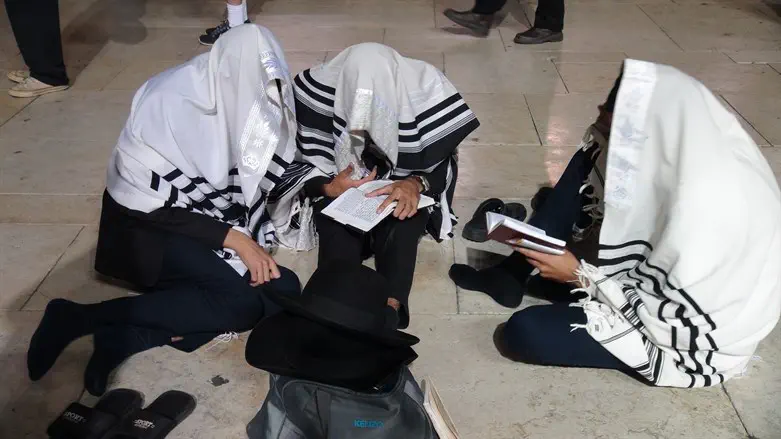
It would seem Shabbas Nachamu and the Nechama that follows right after shabbas Chazon and Tisha B’Av is because within this week falls Tu B’Av, “for there were no better days for Yisroel like Yom Kippur and Tu B’Av “ (Taanit 26b).
Rav Soloveichek zt”l would say that this was the intent of the Gemara when it says Tu B’Av was a day when the slain of Betar were suited to be buried, a sign between Hashem and Bnei Yisroel that the covenant still existed. This is in fact the Nechama felt after the destruction, knowing that the covenant between Hashem and his people has not been severed.
We know Megillas Eicha concludes with words of redemption: “Turn us back to You, O LORD, and we will be restored; Renew our days as of old” (Lamentations 5:21), and Kinos ends with words of Nechama as well.
Rav Soloveichik zt”l explained that Nichum Avelim is not just a fulfillment of chesed and the mitzvah of ve'ahavta lere'ach kamocha, but rather it is a kiyum in the avelus itself, because avelus requires nechama.
This explains the Rambam that says the mitzvah of nichum avelim precedes the mitzvah of bikkur cholim because avelus is a chesed to the living and the dead (Rambam Hilchos Avel 14:7), and therefore nechama is part of the actual avelus.
A proof to this is from the Gemara (Shabbos 153a), which is enunciated in the Rambam (Hilchos Avel 3:4), that in a case where a meis (person who died) has no avelim to be menachem and sit for him, ten others come and take their place and the rest of the nation gathers around them. Here we see that there can be an observance, kiyum, of condolence, nichum avelim, even without the avel there to direct kindness to, because it’s a requirement on the tzibur, the public, to fulfill the intrinsic existence/observance, etzem kiyum, of avelus.
Another proof is that avelus ends only at the time when the consolers stop coming. It may be asked why the avel has to wait for a stoppage of those giving nechama to come; it must be nechama is a kiyum of avelus.
According to this we can understand that by an onen (where the body is in front of him), one may not give nechama. This is because at that time there is no din, law, of avelus on him but rather a din of aninus which has no din of nechama.
This is why on Tisha B’Av we conclude with Shabbos Nachamu, because avelus needs nechama. And this also explains the recitation of nachem on Tisha B’av because the avelus of Tisha B’Av needs nechama.
This is to say that even within the avelus of Tisha B’av there is nechama on the realization that there will be a future redemption. This explains the verse, “Your rod and Your staff, they comfort me” (Psalms 23:4).
The idea that the nechama is part of the avelus can be found in the Gemara at the end of Makkot where Rabbi Akiva sees the Churban, Temple destruction, and observes a fox walking out of the Kodesh Kodashim, and notes optimistically that he now awaits the prophecy of Zecharia to come where Yerushalayim would once again experience happiness and joy. This is because the avelus of the churban is not a contradiction to nechama and salvation as they are part of the same din.
Rabbi Genack points out that this idea is based on what his close friend, Rav Nissen Alpert zt”l says on the verse, “Your rod and You staff, they comfort me” (id). He asks, how is a rod and staff used on man connected to comfort from Hashem. He answers that G-d punishing us with His rod ultimately becomes the greatest nechama.
Excerpt from Articles, Anecdotes & Insights: Genack-Genechovsky Torah (Gefen Publishing House) .Sent by the author.